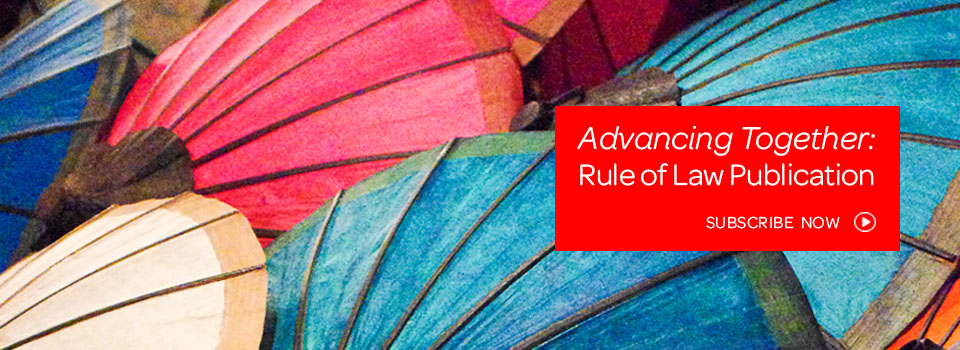Gender and marriage equality within the rule of law
13 December 2017 | Harrison Turner, Law Reform Volunteer, LGBTI Legal Service Inc

Laws concerning gender and marriage equality have rarely, if ever, been more germane than now to discussions about the rule of law in Australia. The administration of government and justice, and indeed the conduct of Australian public and private life writ large, all take place under the rule of law. It is a set of principles whose ascendancy is avowed by all sides of the political and ideological debate, but in reality the core principles of generality, consistency, transparency and practicability gesture to something more neutral and rational. These essential characteristics protect us from arbitrariness and oppression, and carry a necessary implication of equality that underwrites the legitimacy of the entire rules-based legal system in Australia. The rule of law ensures all Australians can recognise the legal system as just, and this is critical at a time when so many of the nation’s public institutions seem out of touch. Neutral though they may be, the principles of the rule of law therefore demand that the law keep pace with changing values in the community and developments in the human rights which they seek to protect and promote.
The legal framework applying to cases of childhood gender dysphoria is a powerful example of the tensions that exist between social values and the law, and highlights the need for a system that brings the two into harmony. Gender dysphoria is a condition in which a person’s gender identity does not match their biological sex. For example, a person with female genitalia may identify as a male. Childhood gender dysphoria is treated in two discrete stages, the first involving puberty blocking medication and the second involving cross-sex hormone treatment. The first stage is reversible, whereas the second is not. Until recently, Australian courts defined both stages as ‘special medical procedures’ meaning that they were beyond both the child and her parent’s legal capacity to authorise.1 This meant both stages of treatment could only proceed with court approval. The exception was for Gillick competent children, who possesses sufficient maturity and intelligence to understand fully what is proposed by the various treatments.2 Assessing Gillick competency was (and still is) also a matter for the courts.3 More recently, the Full Court of the Family Court determined in Re Jamie (on appeal) that the first stage of treatment does not require court consent, but the second stage does (subject to Gillick competence).4 The removal of stage one treatment from the courts’ purview has been widely welcomed by sex and gender diverse individuals, advocates and allies, and by legal and medical professionals practicing in the area.
The current debate regarding marriage equality highlights yet another tension in a legal system operated under the rule of law, namely the perceived conflict between rights to equality and religious freedom.
Reform that relies on the development of the common law is, appropriately enough, slow, incremental and restricted by the conservative nature of precedent based decision-making. As such, what remains after Re Jamie is a broader system that is disaggregated and inconsistent between jurisdictions. For a child with gender dysphoria, the age at which he or she can consent the treatment; availability of tribunals as a quicker, more affordable and less traumatic alternative to courts; and accessibility of mental and physical health services depends mainly on the state and region in which they reside. This is a problem of profound political and cultural significance, and also has significant implications for the rule of law in Australia. The inconsistency, impracticability, obscurity and consequent inequality of gender laws in Australia is felt keenly by the LGBTI community. Our experience at the LGBTI Legal Service attests to that fact.
Current legal restrictions on marriage by same-sex couples are also difficult to reconcile with the rule of law. Arbitrary discrimination based on sexual orientation is anathema to the formal and substantive equality which the rule of law seeks to ensure, not to mention Australia’s international legal obligations. The current debate regarding marriage equality highlights yet another tension in a legal system operated under the rule of law, namely the perceived conflict between rights to equality and religious freedom. An argument has been put, among many others, that marriage equality would compromise freedom of religion by forcing individuals and institutions to act contrary to their religious doctrine. This is a risk that the Marriage Amendment (Same-Sex Marriage) Bill Exposure Draft proposes to resolve by augmenting existing protections for religious ministers, and extending those protections to marriage celebrants. Submissions have been made elsewhere on these provisions. The thing that bears emphasis here is that the rule of law does not operate in isolation of broader concerns. The argument can certainly be put that marriage inequality is arbitrary and thus contrary to the rule of law, but what the debate really shows is that the rule of law needs to accommodate progress.
Laws that conform to community values ensure the legitimacy of a rules-based system that is indispensable if we want our democracy to remain vibrant. In Australia, the gap between marriage and gender laws and shifting social awareness of the Australian people is felt acutely by members and allies of the LGBTI community. While the judiciary does what it (appropriately) can to keep pace, both State and Commonwealth legislatures can remain disappointingly slow to do the same and in a more comprehensive and effective manner. Removal of the legal restrictions on marriage by same-sex couples, and action to support transgender individuals, would do much to bolster the rule of law in Australia and advance the liberty of its citizens.
1 Re Alex: Hormonal Treatment for Gender Identity Dysphoria [2004] FamCA 297; (2004) 180 FLR 89.
2 Gillick v West Norfolk and Wisbech Area Health Authority [1986] AC 112; Secretary, Department of Health and Community Services v JWB and SMB [1992] HCA 15; (1992) 175 CLR 218 (‘Marion’s case’).
3 Re Jamie (Special medical procedure) [2011] FamCA 248.
4 Re Jamie [2013] FamCAFC 110; (2013) 278 FLR 155.
 LexisNexis
LexisNexis
